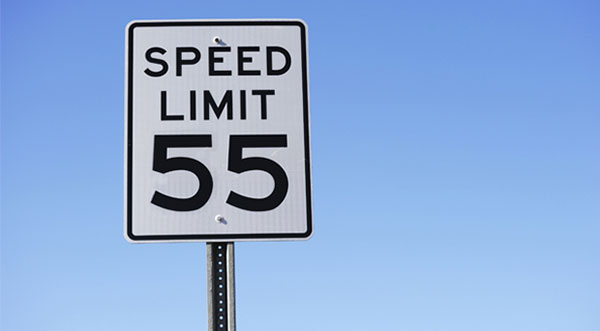The holiday season is a wonderful time to hit the road for a visit with family and friends. But it often means long drives in heavy traffic. To help you stay safe (and sane) on the road to your destination, here’s a list of defensive driving tips to prepare you for the drive.
Planning: The First Line of Defense
According to the National Safety Council (NSC), defensive driving means taking reasonable action to prevent a collision. But defensive driving starts before you even get on the road. Checking weather and road conditions in advance helps you plan a route and know what to expect along the way. It’s also important to pack the car with basic supplies. A first aid kit, flares, snacks and blankets ensure you’re ready for emergencies on long drives.
Traffic Watch
The holiday season is not only one of the busiest travel times, but this year’s low gas prices mean many people will probably choose to drive. And more cars on the road means a higher chance of fatal crashes, so it’s extra important to stay alert this year and learn to spot and avoid hazards using these NSC-approved tips.
– Defensive driving instructors recommend checking your mirrors every three to five seconds and continuously scanning ahead for possible dangers.
– Always give the right of way to fellow motorists, but be prepared to react to unexpected lane changes and turns.
– During heavy traffic, keep a safe distance from other vehicles and give yourself ample response time by slowing your speed.
– Look for signs of impaired, distracted and even aggressive driving and develop techniques like deep breathing to keep calm under pressure.
Collision-Proof Your Drive
 The NSC has identified six unsafe driving behaviors that most often lead to collisions. By understanding each infraction and learning how to avoid them, holiday travelers can develop safer driving habits and collision avoidance techniques.
The NSC has identified six unsafe driving behaviors that most often lead to collisions. By understanding each infraction and learning how to avoid them, holiday travelers can develop safer driving habits and collision avoidance techniques.
1) Improper speed. Keep a close eye on both the posted speed limit and weather conditions. Even if you’re obeying the limit, you may need to slow down to drive safely on a wet or icy road.
2) Violating right of way. To make sure you’re yielding properly and following all traffic signals and stop signs, drive at an appropriate speed to give yourself time to react and take a moment to scan intersections before entering them.
3) Driving left of center. Patience and foresight are key to avoiding this unsafe behavior. Slow down and stay behind cyclists or pedestrians until it’s safe to pass them, and watch the road ahead for animals or other obstacles so you can brake or safely steer around them instead of swerving into the other lane.
4) Turning improperly. Always use turn signals to let other drivers, pedestrians and cyclists know where you’re going. (Most traffic laws require you to signal within 100 feet of a turn, but you should check local regulations.)
5) Passing improperly. When passing, be sure to use your turn signals and check your blind spots, as well as in front of and behind your vehicle. You should be able to pass without getting too close to the car ahead or going over the speed limit; if you can’t, it may not be safe to pass.
6) Following too closely. At low speeds, this can lead to irritating fender benders; at high speeds, it can be deadly. Give yourself at least three seconds of distance between your own vehicle and the one ahead. If someone is tailgating you, don’t speed up! Maintain your speed and move over to let him or her pass if and when it is safe to do so.
Did you know? GEICO policyholders who complete defensive driver training could qualify for discounts on their auto insurance, depending on the state they live in. To learn more about defensive driver courses in your state, visit geico.com/ddc.
By Katherine Palbom & Kristen Koch










Muhammad Sarfraz says,
Great article, and great tips!
Happy Holidays everyone!
Suanne Willis says,
Due to my age, I am supposed to take a defensive driving class to reduce my premium. Can you send me please the details on that class? I’d like to take it this weekend.
Thanks.
Suanne Willis
Deputy Editor says,
Hi Suanne,
Please go to geico.com/ddc to find a defensive driving course in your state.
Thanks and have a great day!
THOMAS SCHYMANSKI says,
I am not planning on a Christmas drive but thanks for the traveling tips. Its a good reminder
for good driving.
Lloyd Edwards says,
When sitting at a red light in traffic behind other vehicles make sure that they proceed with their move and don’t start and then stop in front of you .
I hate to think it, even say it but there are people out there that will set you up for an accident !
Geico has given us some good informative reminders for us to look over. Thanks!
I give thanks to all our veterans and their families, wish them all happy holidays.
Happy holidays to everyone.
Lloyd Edwards.
Charles hall says,
Great information to have
antonio iglesias says,
look twice before changing lanes and be carefull on the blind spot
Jeff Maher says,
There are no blind spots if you set your mirrors correctly and turn your head to check to the side once or twice before you make your move.
C r smith says,
Speed management, space management, visual search, communication, and you compromise your safety and the safety of others if your in a big hurry!
Stephen Boardman says,
So So True. Speed and distance can save you from a serious accident.
bRIAN bECKER says,
Feel free to share with your clients.
Great tip on driving on insane highways.
Buy relaxing music CDs and play them while driving.
I listen to saxophone jazz artists and I just can’t be drawn into irritable moods when I’m listening.
Check out the Marcia Forman Band like their “Relatively Speaking”!
Sherry Bennett says,
Great tips! Vehicle preventive maintenance also helps motorist from being broken down on the side of the road.
Steve says,
How about addressing people who swing out to the left before they make a right turn. Maybe the rest of the country isn’t affected by it, but drivers in Hawaii LOVE to do that. It’s as if they’re driving a semi and pulling a 40′ container, when all they have under them is a 2005 Toyota, or a Ford.
THOMAS MCMAHON says,
Very well done thank you
Gina says,
Want to take driver defense corse
John D says,
Gina
See Geico.com/ddc
shlomo harel says,
very halpfull
Paul Goldberg says,
Please don’t drive when you find yourself nodding off. Stop and take a rest.
Double ditto to the comment about not texting and driving at the same time. This has led to many, many collisions and deaths, including that of motorcyclists who have been rear ended by motorists who were texting at the time. Don’t kill someone and ruin their life and yours…don’t use your cell phone while driving…Please!!!
George Strickland says,
I would suggest a slight modification of the suggestion not to exceed the speed limit when passing. Consider this not too uncommon situation, you are driving on a two lane road with some curves, say every mile or so and traffic in the oncoming lane approximates 1 vehicle per mile. You are traveling at the posted speed limit of 60 mph and come up on a vehicle traveling at 57 mph. Assuming you begin your pass 100 feet behind the slower car, the car is 20 feet long, and you pull back into your lane 100 feet in front after passing it will require almost 1.25 miles to complete the pass, During that time you have a high probability of encountering an oncoming vehicle or rounding a curve or both. Under your suggestion you must not pass because it is unsafe to do so at the posted limit.
Jeff Maher says,
Putting yourself 100 feet behind the car in front of you, especially at 60 mph, is the most dangerous spot to be in, regardless of how long or why you are there.
We have to get to the point where going 57 in a 60 zone, is acceptable in our driving culture. And of course, your following distance to others is THEE most important thing to think about in any situation.